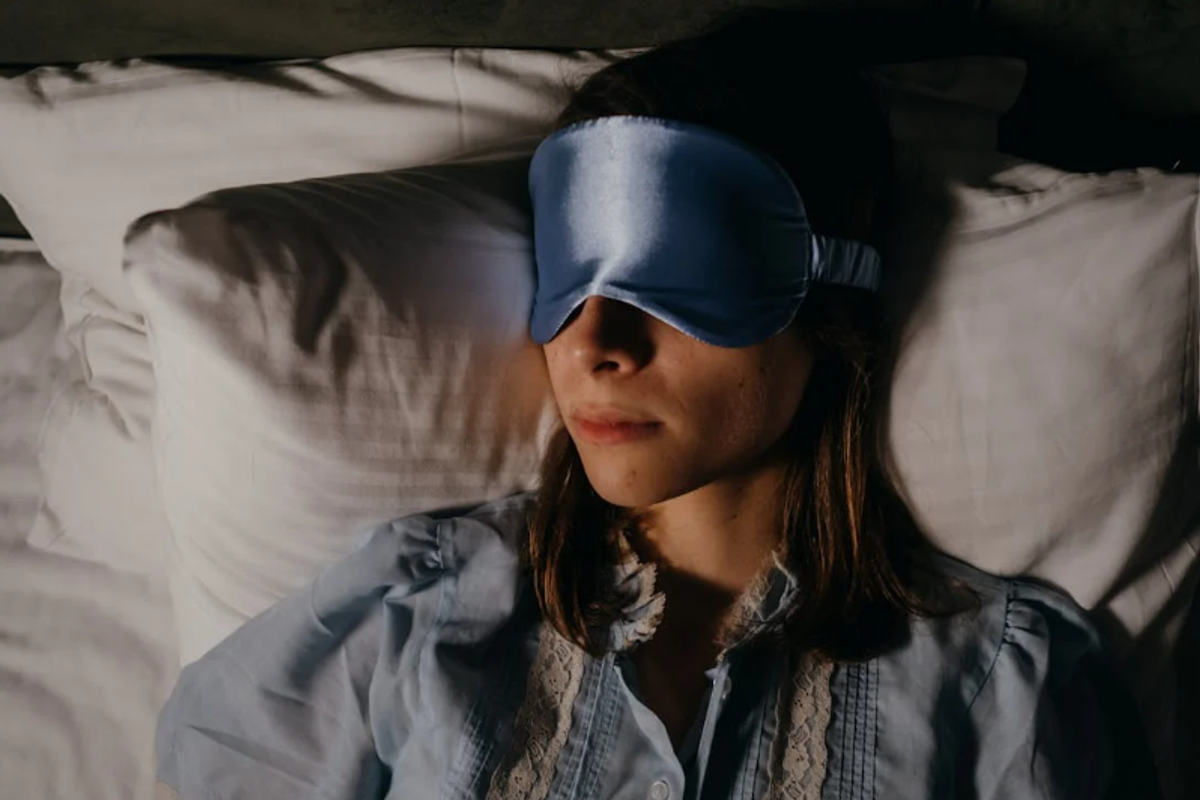How to stop waking up each night at 3 or 4 in the morning
The good news is that there are ways to get back to sleep and stop the downward anxiety spiral.

A woman with her eye mask on in bed.
Do you often wake up at 3 or 4 a.m. with an intense feeling of anxiety? Do you get stressed that you’re awake and begin making a mental laundry list of everything you need to do the next day? Do you start thinking about fights you once had with your spouse or ponder how you have let yourself down in the past?
If so, you’re not alone. It’s common for people to wake up at 3 or 4 a.m. regularly and there’s a reason why we choose this time to catastrophize and worry. The good news is that there are some steps we can take to get through that awkward phase of the night so we can wake up refreshed.
Why do I wake up at 3 or 4 a.m. every night?
Many of us reliably wake up in the middle of the night because after we’ve had a good chunk of sleep, our bodies start to slowly prepare us for the day by reducing melatonin, the hormone that puts us to sleep and increasing levels of cortisol, the stress hormone.
That biological phase of sleep is why we start to feel stressed.

After the big hormone release at 3 or 4 in the morning, if you are dealing with stress in your life, you are more likely to wake up. If your life is calmer and you don’t already have a stress baseline, you will probably wake up, fall asleep quickly and forget that it happened.
Why do I wake up feeling stressed in the middle of the night?
If you’re already experiencing stress in your life, that extra cortisol kick is going to cause you to wake up with a feeling of anxiety. The problem is that when we’re lying in bed in the middle of the night, we are in a vulnerable position. “Around this time in the sleep cycle, we’re at our lowest ebb physically and cognitively. From nature’s viewpoint, this is meant to be a time of physical and emotional recovery, so it’s understandable that our internal resources are low,” Greg Murray, a psychology researcher with expertise in mood, sleep, and the circadian system, writes in The Conversation.
“But we also lack other resources in the middle of the night – social connections, cultural assets, all the coping skills of an adult are unavailable at this time,” Murray continues. “With none of our human skills and capital, we are left alone in the dark with our thoughts. So the mind is partly right when it concludes the problems it’s generated are unsolvable – at 3 a.m., most problems literally would be.”

At this moment, when we’re stressed and feeling vulnerable, stuck in bed with no way out, we can begin to spiral. This is when we ruminate on why we forgot to feed the dog that one day in 1994 or contemplate why things went bad with your first significant other at 21. It’s when we start recalling a disagreement with a friend and plotting out what we’ll say the next time the issue arises.
At this point, if we don’t stop spiraling, we’ll be up until 5 a.m. and will feel like garbage when it’s time to go to work.
The good news is that there are ways to get back to sleep and stop the downward anxiety spiral.
Make a list
Dr. Jade Wu says that if you wake up and feel stressed about things you need to take care of, walk out of your room (so you don’t associate it with stressors) and make a list to read in the morning. This will free you of your worries, because you know you can care for them when you are awake.
- YouTube www.youtube.com
Pay attention to your breath
Murray says you should redirect your attention from your thoughts to your breath, which is a form of meditation. “I bring my attention to my senses, specifically the sound of my breath. When I notice thoughts arising, I gently bring my attention back to the sound of breathing,” Murray writes in The Conversation. This works in 2 ways: first, it takes your attention away from your spiraling thoughts and second, the breathing exercise helps you relax.
Have a bite to eat
Sometimes, we wake up in the middle of the night because we’re hungry and our blood sugar is dropping. “The first question I ask [my patients] is, ‘When was the last time you ate?’” Michael Breus, Ph.D. psychologist specializing in sleep disorders, told Sleep.com. “Often, they’ve finished their last meal at 7 p.m.; now it’s 3 in the morning — that’s eight hours later — so guess what? They’re out of fuel.” If you’ve woken up because of a drop in blood sugar, experts recommend eating a small snack that includes protein and fat, like peanut butter.
This article originally appeared last year.

